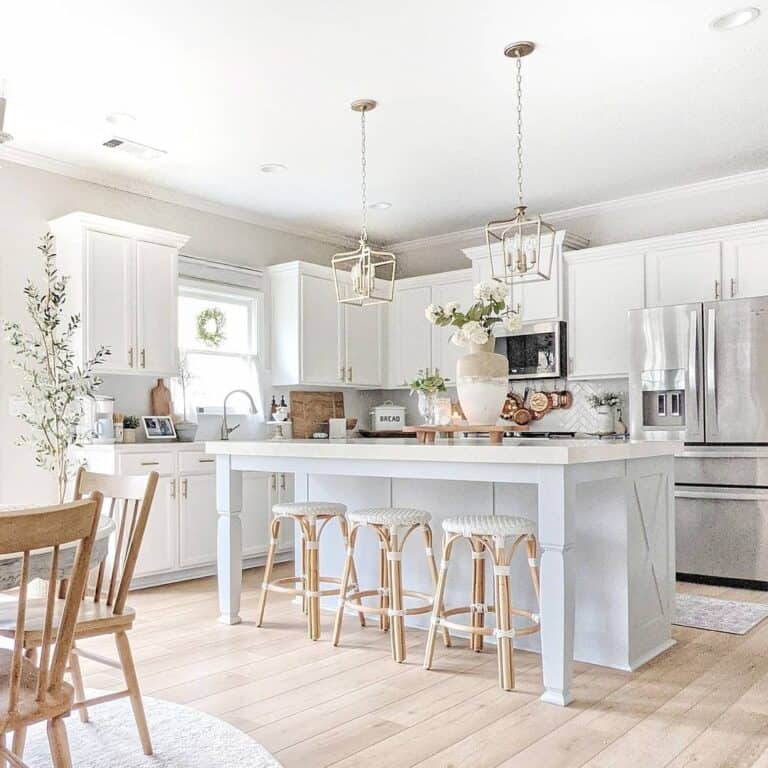A Guide to Choosing the Perfect Legs For Cooking Area Island for Your Home
Selecting the excellent legs for your kitchen area island is a nuanced choice that impacts both the performance and aesthetic appeal of this central area. As you consider these aspects, it comes to be evident that the ideal legs can change not only the appearance of your kitchen area however additionally its use for years to come.

Comprehending Kitchen Island Legs
When selecting legs for a kitchen island, it's vital to recognize their functional and visual duties in the overall layout. The legs function as a vital support system, making sure stability and toughness for the island, which typically works as a work space, dining location, or gathering area. The choice of product and building and construction method must be durable sufficient to hold up against everyday use and prospective wear.
Along with their architectural responsibilities, legs contribute considerably to the island's visual appeal. They can boost the kitchen's style, whether with traditional, contemporary, or eclectic layouts. The elevation and percentage of the legs are also critical factors to consider; they must harmonize with the island's countertop elevation while making sure comfy seating for those using the room.
Additionally, the leg layout can affect the total circulation of the kitchen area. Open, ventilated leg designs can produce a sense of lightness, while strong, significant legs might share an extra based and steady visual - Legs For Kitchen Island. Comprehending these practical and aesthetic facets will certainly assist house owners in making notified options that complement their kitchen's layout and boost its functionality
Popular Styles and Materials
The selection of legs for a cooking area island incorporates a range of popular designs and products, each offering distinct characteristics that can boost both performance and looks. Amongst the most desired designs are contemporary, rustic, and traditional. Contemporary legs frequently include streamlined, minimalist styles that highlight simplicity and tidy lines, making them suitable for modern-day cooking areas. Rustic styles, on the other hand, accept natural environments and frequently showcase redeemed wood or distressed surfaces, including warmth and charm to the space. Traditional legs typically exhibit luxuriant information and workmanship, enhancing classic kitchen area styles.

Height and Security Factors To Consider

Security is one more essential factor to consider. The legs of the cooking area island ought to provide adequate support, making sure that the framework can stand up to day-to-day use without moving or wobbling. Material option plays a significant function in security; metal legs, for example, often tend to supply greater strength compared to timber. In addition, ensuring that the island is securely secured to the flooring or wall can enhance security, especially for larger islands that might birth considerable weight.
Matching Your Cooking Area Visual
Selecting the best legs for your kitchen island goes past performance; it additionally plays a considerable duty in the general visual of the space (Legs For Kitchen Island). When picking legs, think about the design style of your kitchen area.
Legs that enhance or comparison with your island's surface and surrounding cabinets can create visual harmony or striking focal points. Furthermore, think about the finish of the legs; matte, glossy, or distinctive finishes can significantly impact the general feel of the kitchen.
Installation and Upkeep Tips
Setting up kitchen area island legs needs mindful focus to information to ensure both security and visual appeal. Utilize a stud finder to locate wall studs if you are attaching the legs to a wall or using brackets for added support.
When securing the legs, use premium screws and, if needed, timber adhesive for extra stamina. For metal legs, make sure that you are utilizing suitable anchors and tools to avoid find more information damage to your floor covering. It is advisable to inspect for levelness after setup, making adjustments as needed to stay clear of tottering.
Upkeep is similarly essential for longevity - Legs For Kitchen Island. Routinely check the legs for any kind of indications of wear or loosening, especially in high-traffic locations. Tidy the legs with an ideal cleaner, staying clear of rough materials that might scrape the surface. For wood legs, take into consideration applying a timber conditioner regularly to maintain their coating. By complying with these installation and upkeep ideas, you can guarantee that your kitchen island legs stay both practical and aesthetically attractive.
Final Thought
To conclude, choosing the ideal legs for a kitchen island requires mindful consideration of elevation, security, and aesthetic compatibility. By selecting ideal products and designs that straighten with the overall kitchen area layout, performance can be enhanced while keeping visual allure. Appropriate setup and index ongoing maintenance additionally add to the durability and durability of the cooking area island. Ultimately, thoughtful leg option plays an important role in elevating both the usefulness and design of the kitchen area area.
When selecting legs for a kitchen island, it's necessary to recognize their useful and visual functions in the general design. Open, airy leg designs can develop a feeling of lightness, while solid, substantial legs might share a much more grounded and secure aesthetic. The legs of the cooking area island should provide sufficient assistance, making certain that the structure can stand up to day-to-day use without changing or wobbling.Installing cooking area island legs needs careful focus to information to Resources guarantee both stability and visual allure.In verdict, choosing the ideal legs for a kitchen island necessitates careful consideration of height, security, and aesthetic compatibility.